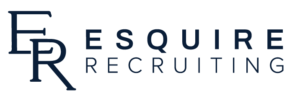Risk Preferences in Your Employees
The idea of risk is one that may be viewed as an abstract idea to the average business professional. How a company copes with risk, implements programs to deal with risk, and the strategies in which they may encourage risk are evolving topics that are subject to change at the blink of an eye. Each person in this world has a different perspective on what it means to deal with risk and how much they are willing to take. Find out those different types of people so that you can identify your employees here!
Risk-Averse
In the most straight forward explanation, risk-averse people are those that are most likely to buy insurance. Where paying a premium will most likely result in a loss from your point of view, a risk-averse employee is willing to undertake that loss in the hopes of protecting themselves from an even greater loss. These types of people see risk as hazardous, dangerous, and a general unpleasant idea. For that reason, these same people are less likely to take on new projects which provide great opportunities for benefit, but also the chance of a decent loss.
Risk-Neutral
Risk-neutral employees will not exactly see risk as a danger to stay away from, but more so deal with it as it comes and goes on a daily basis. Where risk-averse people may be willing to give up opportunities or spend extra resources to avoid a loss occurrence, these people are driven more directly by opportunity cost and expected value. If there is a positive expected value of a new business venture (ie: the probability of a “win” outweighs the probability of a company monetary “loss”), then these employees will likely follow up on their new opportunity.
Risk Seeking
A risk-seeking individual will view those projects will large risk as much more enticing than their counterparts. Although certain endeavors may entail opportunities for loss, the gains that may unfold in these people’s mind are “worth the risk.” It is important to gauge the preferences of these types of employees especially in an investment firm, insurance companies, or in other roles where employees are in charge of handling mass sums of money.
It is important to understand that each organization will handle risk differently, often as a result of owning and operating vastly difference assets. There is no “greatest” risk preference, and no guide that will teach you exactly which steps to take to control for risk while also making sure to secure the greatest benefits and rewards. What is important is to be aware of these types of perspectives in hiring new employees, developing your firm goals, and in assigning people to various projects.

Searching for a new position? Check out our open jobs list!



